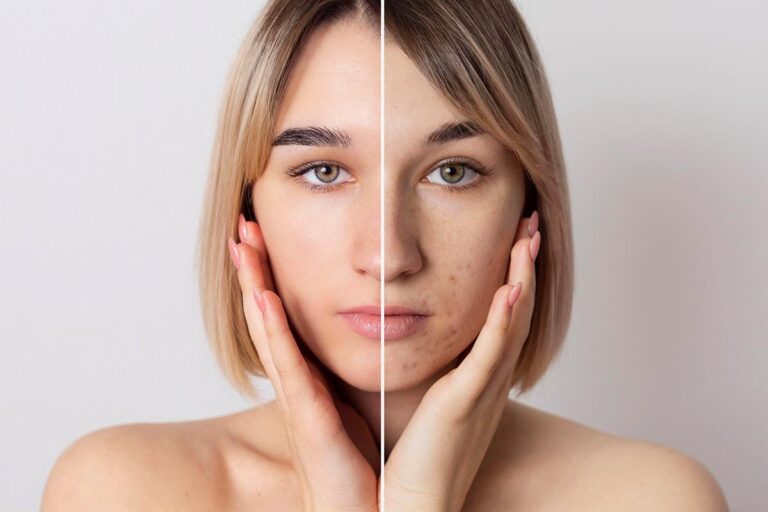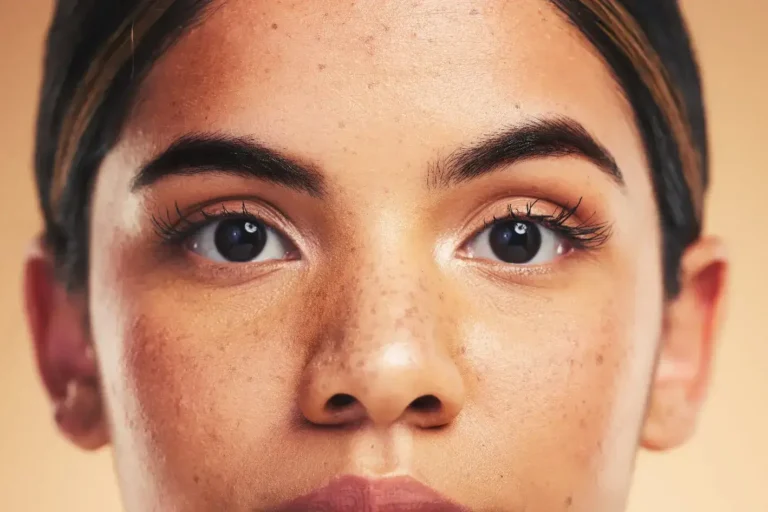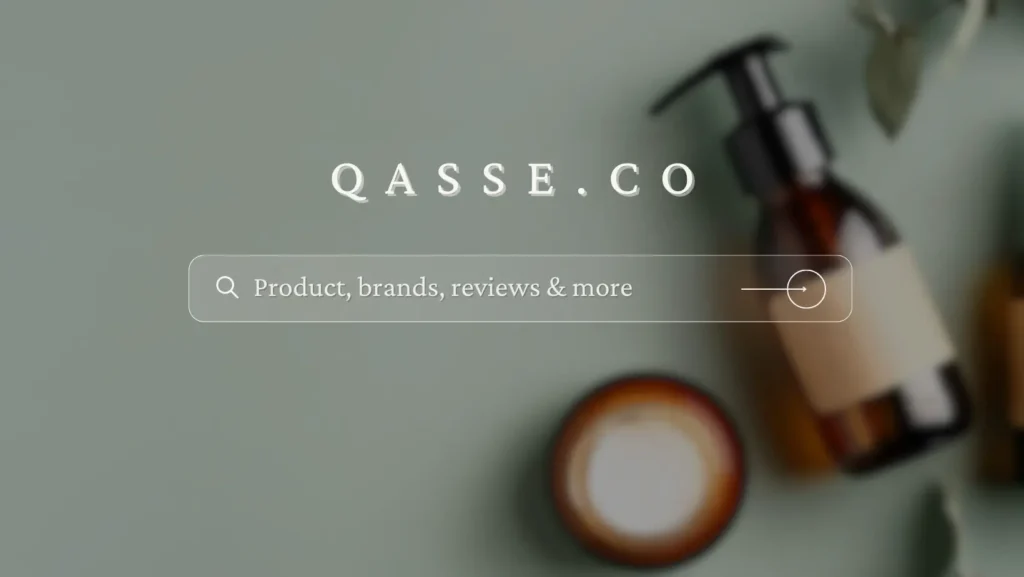The Shocking Truth About Fake SkinCeuticals Products

SkinCeuticals, known for its scientifically backed, effective skincare products, has unfortunately become a prime target for counterfeiters. Its reputation for quality makes it a lucrative brand to imitate. These counterfeit products often lack the genuine product’s effectiveness and can be harmful.
Counterfeiters use various techniques to sell fake products. They exploit online platforms like Amazon, making it challenging for buyers to distinguish between real and fake products. SkinCeuticals has found that a significant percentage of their products sold on Amazon are counterfeits.
The surge in counterfeit skincare products has become a real concern for consumers everywhere. With the explosion of online shopping, especially during the pandemic, it’s easier than ever for fake products to sneak into our carts. These counterfeits aren’t just a hit to your wallet; they can pose serious risks to your health.
Spotting a Fake: The Telltale Signs
Spotting a fake SkinCeuticals product requires a keen eye, as counterfeiters have become increasingly adept at creating convincing replicas. Here are some key signs to look out for:
- Authorized Sellers: Always buy from reputable sellers. SkinCeuticals’ official website, authorized retailers, and dermatologist offices are safe bets. If you’re purchasing from third-party websites, the risk of encountering a counterfeit increases. If you come across a deal for a typically pricey product and it seems unbelievably good, chances are, it might not be true.
- Product Reviews: Before making a purchase, especially on platforms like Amazon, which have multiple third-party sellers, take the time to read the seller’s reviews. Look out for red flags in reviews, such as repetitive language or multiple negative comments, which could indicate that the reviews are fake or the product is not genuine.
- Examine Packaging and Product: Modern counterfeit products often come in packaging that closely resembles the original. However, there can be subtle differences. Check for any inconsistencies in font, color, or spelling. If present on the original, the safety seals should also be on the counterfeit. The product itself, its texture, color, or smell, can be a giveaway. It might be fake if it differs from what you’re used to.
- Spot Test: When you receive the product, do a patch test on your arm or hand before applying it extensively. If you experience any adverse reaction that you haven’t had with this product before, it’s a sign that the product might not be authentic.
- Check the Ingredients: Counterfeit products may not have the same quality or concentration of ingredients as genuine ones. If possible, compare the ingredient list on the product with the one listed on the official SkinCeuticals website.
- Storage and Manufacturing: There’s no way to know the conditions under which a counterfeit product was manufactured or stored. Unlike genuine products, which adhere to strict safety and quality standards, counterfeit goods may be produced and stored in unhygienic conditions, leading to contamination.
- Risk of Harmful Ingredients: The use of counterfeit skincare products can expose you to harmful ingredients like heavy metals (mercury, lead), known carcinogens (arsenic), and high levels of bacteria, some of which are known human pathogens. In extreme cases, substances like Super Glue have been found in counterfeit cosmetics, posing severe risks to the user.
It’s really important to stay alert and informed to ensure you’re buying a genuine SkinCeuticals product. If in doubt, consult directly with a skincare professional or visit the official SkinCeuticals website for guidance
The Dark Side of Bargain Hunting
Buying discounted skincare products online can be a gamble. Especially with sought-after brands, the lower prices often mean you’re dealing with fakes. And these aren’t just any fakes; they’re made in grimy conditions, which means all sorts of nasty stuff could be lurking in them. We’re talking about harsh chemicals like arsenic and lead, and even icky things like E. coli. Imagine slathering that on your skin!
People have had some nasty reactions to these counterfeit products. Think rashes, infections, and sometimes burns that just don’t go away. It’s not just a few unlucky folks, either. There are loads of stories about the damage these fakes have caused.
It’s not just about our skin, though. These fakes hit beauty brands hard in the wallet and damage their reputation. With social media and online shopping, these knock-offs are way too easy to spread.
So, what can we do? Stick to buying from the places we trust. Those too-good-to-be-true deals? They usually are. If you do come across a fake, let the brand know. They’re fighting this fight, too, and every bit helps.
Why Cheap Can Cost You Dearly
When you’re eyeing those beauty bargains online, remember that it’s not always what it seems. The beauty industry, a multi-billion-dollar behemoth, is a prime target for counterfeiters. The shift to online shopping has made it easier than ever to stumble upon fakes. But here’s the catch: these products might look like the real deal, but they’re often loaded with harmful chemicals. Think about slathering on stuff like arsenic or mercury on your skin—scary, right?
But the impact goes beyond just bad skin reactions. In 2018, counterfeit products hit the global economy hard, causing damages of around $323 billion. It’s a massive problem that affects everyone, from the customers who end up with harmful products to the original brands that lose their reputation and revenue.
And it’s not just a small-scale issue. Take Los Angeles, for example. The LAPD seized a whopping $300,000 worth of counterfeit makeup. We’re talking about big brands, like Kylie Cosmetics, being faked and sold to buyers who had no clue. This raid just shows the scale and profit of this illegal market.
Seeking the Genuine in a Sea of Legal Fakes
Details: Counterfeit skincare products are a significant issue in the beauty industry, with several popular brands being targeted. Here’s a closer look at some of the most frequently counterfeited skincare products.
SkinMedica TNS Essential Serum is a high-end product that often finds itself a target for counterfeiters due to its popularity and high price point. The fake versions often contain harmful substances instead of the beneficial ingredients found in the genuine product.
Another product widely counterfeited due to its popularity and affordability is The Ordinary’s Hyaluronic Acid 2% + B5. Counterfeit versions of this product may contain harmful ingredients and lack the beneficial properties of the genuine product.
Counterfeiters also love duplicating Estée Lauder Advanced Night Repair, an iconic serum. Fake versions may not deliver the promised skin benefits and could contain harmful ingredients.
Known for its luxury skincare products, La Mer Crème de la Mer is a prime target for counterfeiters. The counterfeit versions of this moisturizing cream often contain substandard ingredients that can harm the skin.
While not a skincare product, MAC Cosmetics lipstick is frequently counterfeited. These fake products often contain harmful substances and lack the quality and longevity of the genuine product.
How to Protect Yourself
To steer clear of counterfeit skincare, start by shopping at authorized retailers, especially the brand’s own website or trusted stores. It’s tempting to hunt for bargains on third-party sites, but that’s where most fakes pop up.
Before you click ‘buy,’ do a quick background check on the seller. Are they officially linked to the brand? What do other customers say about them? A super low price can be a red flag, so if it seems too good to be true, it probably is.
Take a moment to really look at what you’re buying. If the packaging seems off, like the colors are weird or there’s a typo, that’s a hint you might be looking at a fake. The same goes for the product itself – if it smells funky or feels different, trust your instincts.
Check the ingredients list against what’s on the brand’s site. This can be a quick way to spot a fake. Trying out a new skincare product? Do a small patch test first to see how your skin reacts.
If you stumble upon a dodgy product, let the brand know. They’re often trying to track these counterfeits down, too. Keep yourself in the loop about the latest in skincare scams. The more you know, the better you can protect yourself.
Don’t forget to pop over to the brand’s website every now and then. They might shuffle around their list of approved sellers; you don’t want to miss that. And hey, when you’re all set to buy, go for payment methods that have got your back – you know, the ones with buyer protection. That way, if you accidentally end up with a fake, you’ve got a fighting chance to get your cash back.
Conclusion
Counterfeit skincare products like SkinCeuticals come with more risks than just wasted money. These illegal copies often have harmful ingredients that can damage your skin and overall health. It’s a serious issue where the impact goes beyond just the financial loss.
Buying fake skincare items might seem like a good deal due to their low prices, but it’s a gamble with your health. These products harm consumers and damage the reputation and financial standing of genuine brands. To ensure your safety, always purchase from reliable sources and be wary of unrealistically low prices.







